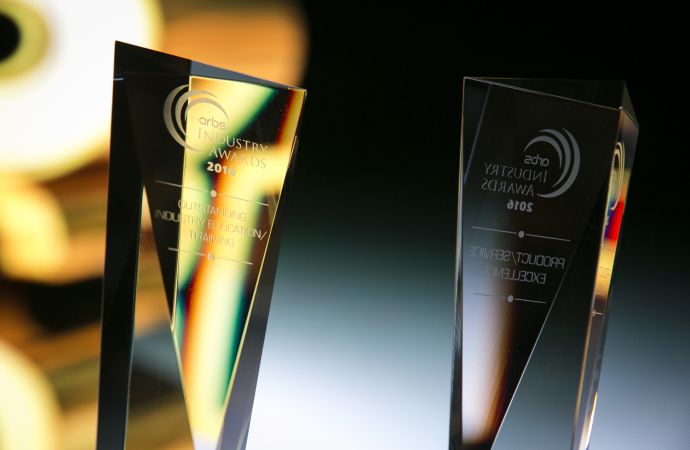As the first company to test hydrocarbon refrigerants in the United States, ice cream maker Ben & Jerry’s is determined to make HC freezers the national industry standard. The only barrier remaining is the approval by the U.S. Environmental Protection Agency to use HCs in cooling & refrigeration.

On 29 September, Ben & Jerry’s announced a pilot project testing the first 50 hydrocarbon-based ice cream freezers on the U.S. market. Its “Cleaner Greener Freezers” using purified propane will first be applied in point of sales around Boston, Virgina, Maryland and Washington, D.C. before a widespread commercialization. Ben & Jerry’s is confident that its trials with the HC technology will convince other US manufacturers to adopt it as early as possible. This could “start a freezer revolution” making hydrocarbons the national standard for small commercial freezers and household fridges, the company hopes.
“It’s one small step for our business, and a giant leap for opening the door to prove that a more environmentally benign refrigeration technology could work in the U.S. market,” Ben & Jerry’s engineer Pete Gosselin said.
Hydrocarbons a global standard
Having worked with its parent company Unilever at alternatives to high global warming and ozone depleting refrigerants over the past years, Ben & Jerry’s decided for hydrocarbons due to their energy efficiency potential. At similar costs as conventional refrigerators, HC freezers are 10-15% more efficient than HFC units, reducing large amounts of electricity. Moreover, hydrocarbons’ low Global Warming Potential brings direct greenhouse gas emissions down to a minimum.
For the latest project, Ben & Jerry’s partnered up with Greenpeace to use its “GreenFreeze” technology for refrigerators. Appliances using the “GreenFreeze” technology developed and commercialized by the green NGO in 1992, today number more than 300 million units around the world. Unilever said that up to now there hasn’t been any recorded accident caused by flammable hydrocarbons in any of the 270,000 HC freezer cabinets it is operating in Europe, Asia and Latin America.
Pending EPA approval
Despite the global acceptance of HCs in cooling equipment, Ben & Jerry’s had to obtain permission from the US Environmental Protection Agency (EPA) to test up to 2,000 freezers over the coming years. Already a commonplace in Europe, hydrocarbons are still not allowed in the U.S. The so-called SNAP approval process to regulate alternatives to ozone depleting substances considers refrigerants made from hydrocarbons like propane and butane to be flammable and therefore unsuited for use in anything other than industrial applications. Before starting the field trial, Ben & Jerry’s therefore needed the freezers to be tested and approved by Underwriters Laboratories. The company hopes that at the end of the trial period the lengthy EPA SNAP approval process will have found hydrocarbons to be acceptable for general use, finally opening up the U.S. market for a widespread commercialization of HCs. Once hydrocarbons are approved, Ben & Jerry’s estimates it could convert its more than 100,000 ice cream cabinets within 8 to10 years.
“It’s one small step for our business, and a giant leap for opening the door to prove that a more environmentally benign refrigeration technology could work in the U.S. market,” Ben & Jerry’s engineer Pete Gosselin said.
Hydrocarbons a global standard
Having worked with its parent company Unilever at alternatives to high global warming and ozone depleting refrigerants over the past years, Ben & Jerry’s decided for hydrocarbons due to their energy efficiency potential. At similar costs as conventional refrigerators, HC freezers are 10-15% more efficient than HFC units, reducing large amounts of electricity. Moreover, hydrocarbons’ low Global Warming Potential brings direct greenhouse gas emissions down to a minimum.
For the latest project, Ben & Jerry’s partnered up with Greenpeace to use its “GreenFreeze” technology for refrigerators. Appliances using the “GreenFreeze” technology developed and commercialized by the green NGO in 1992, today number more than 300 million units around the world. Unilever said that up to now there hasn’t been any recorded accident caused by flammable hydrocarbons in any of the 270,000 HC freezer cabinets it is operating in Europe, Asia and Latin America.
Pending EPA approval
Despite the global acceptance of HCs in cooling equipment, Ben & Jerry’s had to obtain permission from the US Environmental Protection Agency (EPA) to test up to 2,000 freezers over the coming years. Already a commonplace in Europe, hydrocarbons are still not allowed in the U.S. The so-called SNAP approval process to regulate alternatives to ozone depleting substances considers refrigerants made from hydrocarbons like propane and butane to be flammable and therefore unsuited for use in anything other than industrial applications. Before starting the field trial, Ben & Jerry’s therefore needed the freezers to be tested and approved by Underwriters Laboratories. The company hopes that at the end of the trial period the lengthy EPA SNAP approval process will have found hydrocarbons to be acceptable for general use, finally opening up the U.S. market for a widespread commercialization of HCs. Once hydrocarbons are approved, Ben & Jerry’s estimates it could convert its more than 100,000 ice cream cabinets within 8 to10 years.
MORE INFORMATION
Related stories



